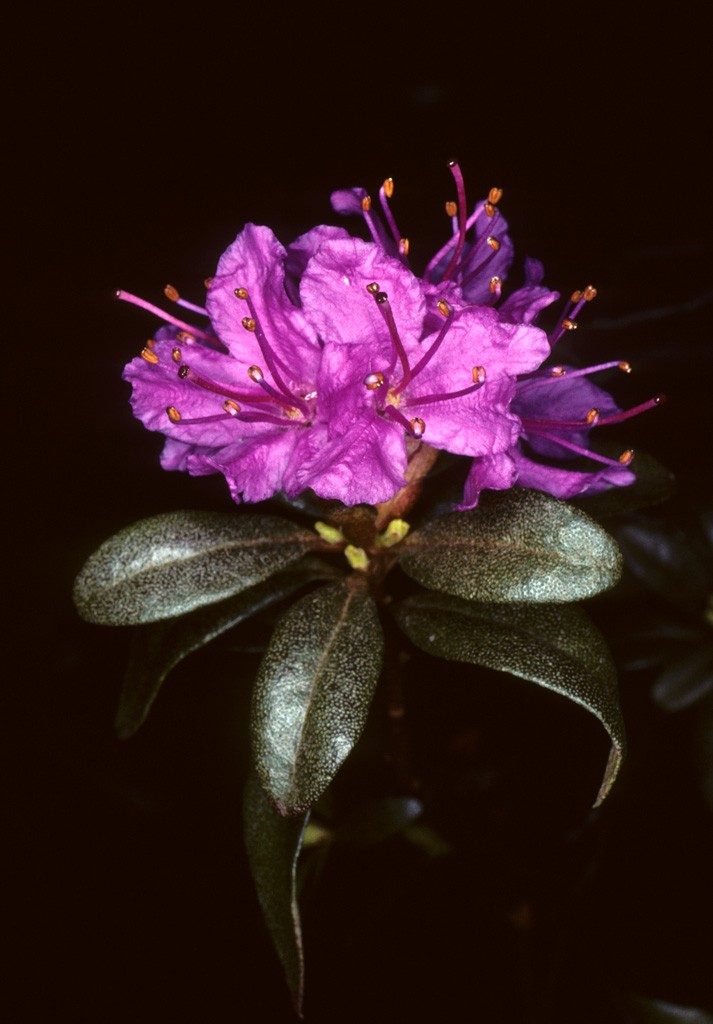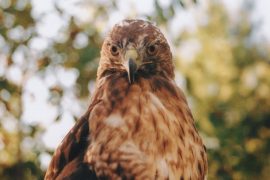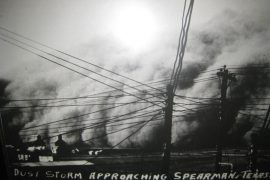The Beautiful
My kayak glided through a narrow canyon, the sandstone walls rising vertically more than sixty feet, speckled with ferns, moss, and fan-shaped liverworts pressed tightly to the wet rock. It was mid-May—spring wildflower season in the Great Lakes region, a welcome burst of color after the long, dark winter—and spring had come again to the natural wonderland of canyons in the Wisconsin Dells.
Spring is my favorite season, in large part because I wait for it so long. In my part of the world, winters are cold, dark, and can drag on drearily for months. The landscape is stark, the colors muted, mostly various shades of gray, though highlighted by brilliant blankets of snow and the occasional crystal blue sky. Spring breaks in on us in a wave of warmth and color as flowers climb through the snow and soil. Easter also comes during spring, as leaves emerge from their budded tombs and flowers from their fall graves.
Theologians talk of the Beautiful, the Good, and the True. These three concepts, traced back to Plato, are a reflection of God—even a definition of God—and the ultimate pursuit of humankind. Like the Trinity, you cannot have one without having them all. Where you have beauty and goodness, truth is also there. Although they transcend the physical world, they also inextricably link us to it. Beauty, goodness, and truth are one of the primary ways we come to know God, know his creation, and respond with our lives.
Some of my favorite flowers of spring are azaleas, and they are undeniably Beautiful. Their flaming pink and purple hues are a beautiful and incredible sight, lighting up entire hillsides in the Appalachians in a blaze of color. Here in Wisconsin, they are sparse, occasionally found in landscaping, adorning front porches and backyards. But much to my delight, there is one azalea that grows in the wild in Wisconsin, Lapland azalea, a diminutive relative of its Appalachian cousins. It stands, or rather drapes, three to four feet long, hanging from wet sandstone cliffs, showing off its deep magenta flowers like prized jewels at an outdoor bazaar. It has only been found in two places in the state. One those places is in the Wisconsin Dells, and I am paddling steadily toward it.

While all of creation has an intrinsic beauty, I find rare species uniquely beautiful. Like a precious stone, part of their beauty comes from their rarity. Why some species are rare and what can be done to help them thrive, is something I often ponder. Some have lost much of their habitat. Some are threatened by invasive species: plants and animals not native here that run amok, sometimes literally smothering native plants and animals. And some, like the Lapland azalea, simply live at the edge of their range.
There is a particular beauty about living on the edge, living on the margin. Jesus hung out primarily with those on the margin of society, and he must have found a certain beauty in those nearly lost, smothered by their low status or sickness. He cared in a particular way for those on the margin, to remind them and the world of their intrinsic beauty. Perhaps in the same way, I am drawn to rare species, to behold, and then uphold, their resplendent Beauty endowed by their Creator.
The Good
The relative importance of saving or protecting species like Lapland azalea, and at what cost, is hotly debated. Lapland azalea (Rhododendron lapponicum) is a boreal species, and likely made its way to Wisconsin over 100,000 years ago when great glaciers covered much of northern North America. When the glaciers finally retreated some 15,000 years ago, Lapland azalea remained, and remains to this day in just two relict populations in the state. It’s rare elsewhere too, found only in one county each in New York, Vermont, New Hampshire, and Maine. And that’s it. That’s the entire population in the U.S. Lapland azalea mainly grows far to the north in Canada, Siberia, and, as the name implies, in scattered places in northern Finland.
It’s true that the main home of Lapland azalea is not in Wisconsin, or even in the U.S. But it has also survived here for at least 15,000 years, probably much longer. Some rare plants and animals are listed as endangered or threatened under the federal Endangered Species Act, while others, like Lapland azalea, are protected by state endangered species laws, at least in Wisconsin. These laws often spark controversy when conservation clashes with proposals for timber harvesting, mining, or other economic development. In the mid-1990s, a proposal made its way through Congress to rewrite the federal Endangered Species Act, potentially stripping it of much of its power. While the proposal drew sharp critiques from conservationists, the most strident criticism came from religious leaders, who saw the proposed reforms as a sinking of the modern-day version of Noah’s Ark.
The Ark metaphor is apt, not only because the endangered species laws can protect rare species from impending doom, but because the laws often don’t discriminate. Stunning flowers take their place on the lists with non-descript grasses, trout with minnows. Noah too didn’t discriminate, at least not much. A careful reading of the story reveals that God instructed Noah to save two of every unclean animal and seven of every clean animal (Gen 7:2). Seven, of course, is the number of completion or perfection in the Judeo-Christian scriptures.
I like to sit with the Noah’s Ark story, and with it, the story of creation itself. It is a story of origins, but also of value. What do we value and why? What is the value of Lapland azalea? Certainly it provides some small role it its cliff-side ecosystem, providing passing hummingbirds with a brief boost of nectar before its flowers fade. And, in my opinion, it is also undeniably beautiful. But it is also Good. Not good as in my-daughter’s-behavior-today-was-good, but good because the Creator created every seed-bearing plant… and “saw that it was Good” (Gen 1:11-12). Lapland azalea is part of the chorus of creation, and, for those with ears to hear, plays its part in a great symphony of life.
The True
My kayak glides past the spot marked on my map. I can’t find the plants. I double back, scanning the cliffs, and still can’t see anything resembling an azalea. After a long period of searching, I finally spot it, and my heart sinks.
What was described twenty years ago as a small hanging garden of Babylon is now only eight plants. Functionally, seven plants— one is nearly dead with only three green leaves remaining. And of those seven, only one is in flower, a limp, fading blossom that seems to represent the entire colony in its waning days. Just two decades before, the colony was a solid mass of tiny hanging shrubs, so dense it was deemed impossible to count the number of individual plants. I drift alongside the cliffs in a state of shock. The habitat appears unchanged, the rest of the vegetation above and below fine. What happened here?
My thoughts turn toward increasingly unpredictable weather patterns, especially extreme floods and extreme droughts. While floods and droughts have always been part of our weather, when plotted over the past twenty years, extreme weather has exploded like a seismograph recording an earthquake, with more rapid and violent swings of deluges followed by epic dry spells. The Dells are a poster child: in 2008, a 500-year storm dumped 14 inches of rain in the area over a two-day period. That’s more rain than the area usually sees in an entire summer. The water rose so fast it burst a dam, sending a wall of water downstream that washed entire houses into the river. Fortunately, the azalea was upstream of the dam, and probably survived mostly unscathed. Four summers later however, the area saw virtually no rain at all. The normally lush landscape withered. Shallow aquifers dried up. Sandstone cliffs that normally seep water were as parched as a Nevada desert. And Lapland azalea, the little boreal Rhododendron that clung to life on the margin, baked to a crisp.
Or so I suspect— there’s no way to know for sure. But I believe this much to be true: climate change is real, and it’s having real consequences for the Beautiful and the Good.
Despite what some would have us believe, solutions abound for addressing the root causes of increasingly extreme weather, and the vast majority of people agree on them: clean energy, more efficient cars, and reducing climate-altering pollution. But a big part of the problem is that it seems so… big. What can any one person do?
My wife and I recently bought a new hybrid vehicle, and its efficiency is impressive. But I’d have C.S. Lewis’s Screwtape devil on my shoulder if I thought I could consume my way out of this: just buy a new car, feel some self-congratulatory pride, and never actually change my habits. A bigger sacrifice was selling the old car and going back to being a one-car family, which means coordinating when we need to drive, and when that isn’t possible, biking or taking the bus whether it’s 90 degrees or -9.
The other significant choice we’ve made is to live in the city rather than in the suburbs, in an older flat that is in biking distance of work, church, and school. It’s relatively small, and after making energy efficiency upgrades, takes less energy to heat and cool, even compared to newer, bigger homes. I can mow the front lawn with an electric mower in 10 minutes. But it’s smallness also literally cramps my style. In the only bathroom, I can sit on the toilet and both wash my hands in the sink and my feet in the tub without ever getting up. In the master bedroom, my wife and I share a single three-a-half foot-wide closet, our clothes packed like penguins keeping warm. When I visit friends in the suburbs with new, spacious homes with walk-in closets and large master suites with his-and-her-sinks, our little flat near downtown does feel like a sacrifice.
I like spacious homes with large lovely yards. But I also like Lapland azalea, and thousands of good creatures like it. So I turn to the maker of the Beautiful and the Good, and also the author of the True, to acknowledge a deeper Truth with implications for climate change—that we are stewards, and stewards are sometimes called to self-sacrifice and humility so that beauty and goodness may thrive.
Sacrifice and humility are hard to maintain, however, and owning a hybrid car or choosing to live in a smaller home isn’t much of a sacrifice, anyway. It’s easy to fall back into comfort and complacency, especially with a problem as big as climate change. On the topic of big problems, Wendell Berry writes that we often want to look to a big solution, when we are usually better served by many people doing small things well for a long period of time.
But continual sacrifice means stepping further out my comfort zone—toward the margin, as it were, like Lapland azalea. By which I really mean making more margin in my life, and leaving more room for others. If my consumption is affecting a plant, how much more is it affecting people, those in my own state and around the world? If Lapland azalea withers or is swept away in a flood, I’m saddened. If crops wither or are flooded in a third-world county, people die.
And so I am continually challenged to imagine exciting but difficult actions. What might it look like to invest in community rather than consumerism? How can I help others cultivate a sense of awe and wonder in the natural world? How can I nurture such awe and wonder in myself? And what can I do to care for, make room for, and cultivate relationships with those plants, places, and people at the margins?
Sometimes it is more important to start with the right questions than find the right answers. More importantly, to continually come back to the questions, rather than seek the definitive answer. How can we more fully appreciate the Beautiful? How can we better care for the Good? How can we lovingly proclaim what is True? These are the questions that truly change us, and that will change the world. Our responses are, at their core, acts of love. Love for Lapland azalea and thousands other plants, animals, and people around the globe. Maybe we can reverse the trends affecting those at the margin; I cannot help but do my small part to try.





